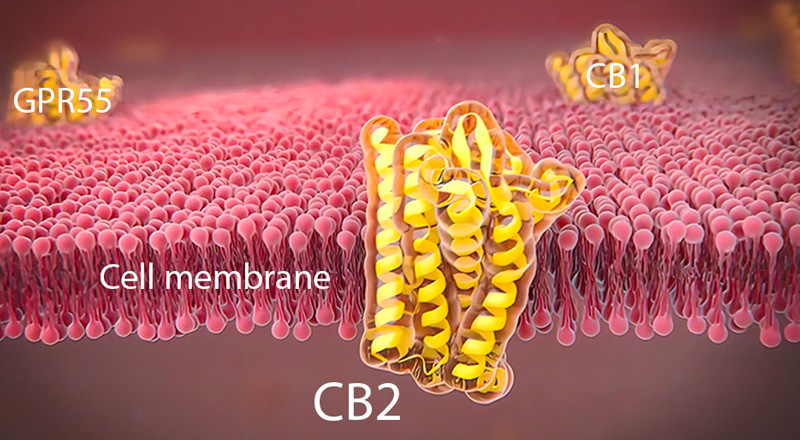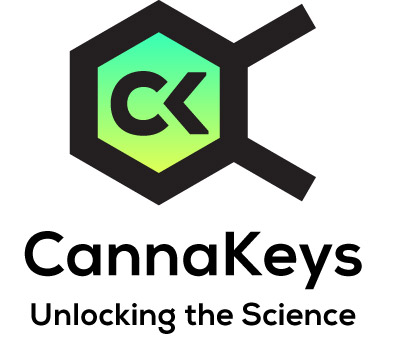
Sally’s Question:
How many endocannabinoid receptor sites are there and how do we know that?
Uwe’s answer:
To-date there are two confirmed endocannabinoid receptor sites CB1 and CB2. Confirmation relies on two components, one the successful cloning of a proposed endocannabinoid receptor (i.e. a naturally occurring receptor site), and two, the discovery of an endocannabinoid i.e. a cannabinoid made by the human body (in the case of CB1 and CB2 anandamide and 2-AG) that primarily binds with it.
To date, two chromosomes are of clinical importance informing the cannabinoid health sciences. Chromosome 6, which contains the gene CNR1 that codes for i.e. produces the protein sequences that comprise the entire endocannabinoid receptor 1 (abr. CB1), and chromosome 1 which in turn contains the gene CRN2 which codes for cannabinoid receptor 2 (abr. CB2). CB11 and CB22 were first cloned in the late eighties/early nineties. Cloning in general refers to the process of either natural or man-made duplication of genetically identical organisms. In this context it refers to the successful production of the gene that codes for and builds these receptors.
CB1 and CB2 are confirmed because both conditions for classifications are met (i.e. successful cloning and the discovery or corresponding endocannabinoids).
The currently available scientific literature suggests that GPR55 may be classified as the third cannabinoid receptor CB3. However, while it has been successfully cloned (1999)3 proposed corresponding endocannabinoids (i.e. LPI and/or 2-ALPI)4 await confirmation.
- Lisa A. Matsuda, Stephen J. Lolait, Michael J. Brownstein, Alice C. Young & Tom I. Bonner. Laboratory of Cell Biology, National Institutes of Mental Health, Bethesda, Maryland, 20892, USA. Structure of a cannabinoid receptor and functional expression of the cloned cDNA. Nature 346, 561–564 (1990).
- Munro S, Thomas KL, and Abu-Shaar M. MRC Laboratory of Molecular Biology, Cambridge, UK. Molecular characterization of a peripheral receptor for cannabinoids. Nature. 1993 Sep 2;365(6441):61-5.
- Sawzdargo M, Nguyen T, Lee DK, Lynch KR, Cheng R, Heng HH, George SR, O’Dowd BF (Feb 1999). “Identification and cloning of three novel human G protein-coupled receptor genes GPR52, PsiGPR53 and GPR55: GPR55 is extensively expressed in human brain”. Brain Research. Molecular Brain Research. 64 (2): 193–8.
- Oka S, Toshida T, Maruyama K, Nakajima K, Yamashita A, Sugiura T (Jan 2009). “2-Arachidonoyl-sn-glycero-3-phosphoinositol: a possible natural ligand for GPR55”. Journal of Biochemistry. 145 (1): 13–20.
Disclaimers: the information in this email and the information contained in the embedded links/site is provided for informational purposes only and is not meant to substitute for the advice provided by your own physician or other medical professional. You should not use the information contained herein for diagnosing a health problem or disease. If using a product, you should read carefully all product packaging. If you have or suspect that you have a medical problem, promptly contact your health care provider.
Information on this site is based on scientific studies (human, animal, or in vitro), clinical experience, or traditional usage as cited in each article. The results reported may not necessarily occur in all individuals. For many of the conditions discussed, treatment with prescription or over-the-counter medication is also available. Consult your physician, nutritionally oriented health care practitioner, and/or pharmacist for any health problem and before using any supplements or before making any changes in prescribed medications.

